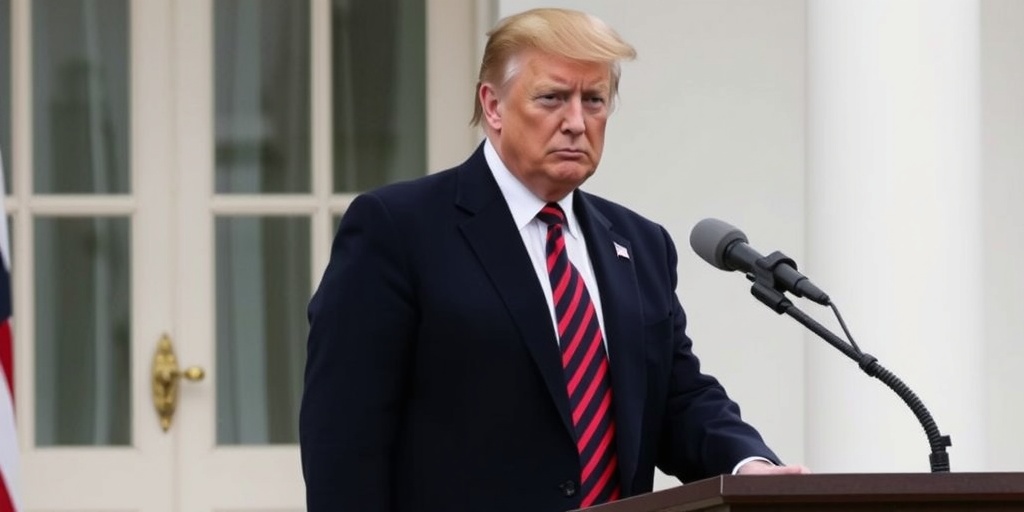Now Reading: What’s Next for the Nickel After the Penny’s Demise?
-
01
What’s Next for the Nickel After the Penny’s Demise?
What’s Next for the Nickel After the Penny’s Demise?

The Future of the Penny: Costly Production and Potential Policy Changes
Recently, President Trump issued a directive for the U.S. Mint to cease minting pennies, citing concerns over their production costs. According to Trump, each penny costs the government “literally more than 2 cents.” This assertion aligns with findings that show the U.S. has significantly overspent on penny production since 2006, leading to a growing conversation about the future of this coin.
Indeed, the production costs associated with the penny are staggering. It has been reported that while dimes and quarters are profitable for the Mint, the penny has become a financial burden. Currently, it costs approximately 3.7 cents to mint a single penny—substantially more than its face value.
The challenges of coin production are complex. The nickel, for instance, also presents economic difficulties; though worth five cents, it costs twice as much to produce. This irony highlights a critical issue: the minting of coins does not simply correlate with their monetary value, leading to puzzling financial outcomes.
Since 2020, the U.S. Mint has averaged over $300 million annually in profit from the minting of coins, largely thanks to popular denominations like dimes and quarters. However, their profits dropped to around $100 million last year, raising questions about the sustainability of producing physically minted coins when the costs keep rising, especially with fluctuations in the prices of materials, notably zinc for pennies and copper for nickels.
Interestingly, it is challenging to effectively reduce the production costs of coins without halting their production altogether. As noted by Rhett Jeppson, a former chief executive of the U.S. Mint, ideas such as minting pennies from plastic have surfaced, yet none are practical enough for implementation. The dilemma over the penny reflects broader concerns about monetary policy and government spending.
Among the proposed options for addressing the issues surrounding coins, one is to simply continue minting pennies. Despite its continued financial loss on the penny and nickel, the Mint remains profitable overall due to its minting of more valuable coins. However, lingering questions arise about the Mint’s long-term viability, particularly as production costs climb.
Another option is to eliminate the penny altogether, a move that could ostensibly save taxpayers around $85 million every year. Yet, this might create a domino effect; the demand for nickels could rise, and since it costs more to mint nickel coins, the savings might be negated. Historical data indicate that the government has lost significant amounts on nickel production, similar to pennies.
Furthermore, decoupling the penny could lead to significant adjustments in various economic sectors. For example, many states have laws regarding sales tax that require rounding to the nearest cent. Transitioning to a cash system without pennies would necessitate changes in how stores handle transactions.
Historically, other nations have navigated similar concerns. Canada eliminated the penny in 2012, while the U.S. Defense Department quit using pennies on military bases back in the 1980s due to shipping costs. These examples demonstrate that such changes are indeed feasible and could influence how currency is utilized within the United States.
A more radical option would consider discontinuing both the penny and the nickel. While this option appears straightforward, it raises several practical concerns regarding how transactions would be managed. Consumers might find it cumbersome to make precise payments without these smaller denominations, potentially leading to complicated pricing systems or the necessity to round all prices to the nearest ten cents.
Moreover, if cash continues to diminish in use among consumers, as noted in a Federal Reserve study that reported only 16% of payments were made in cash in 2023, the need for smaller coins could further dwindle. Over the next few decades, quarters and dimes could transition from being profitable to becoming financial losses as well, raising the possibility of a cashless future.
Even with these challenges, if the U.S. Mint stops circulating traditional coins, it would still generate returns through numismatic and bullion products. These segments have been stable, making it possible for the Mint to contribute positively to the Treasury even if common coin production ceased.
Overall, the conversation around the future of pennies and other coinage illustrates the need for careful consideration of both the economic implications and the shifting landscape of monetary transactions. While decisions about change can seem minor, they can have broader consequences that resonate through everyday commerce and tax systems alike. In the grander scheme, as these considerations are made, it is vital to abide by the principle that policy decisions should adapt to evolving economic realities while taking the sentiments of the public into account.
Stay Informed With the Latest & Most Important News
Previous Post
Next Post
-
 01New technology breakthrough has everyone talking right now
01New technology breakthrough has everyone talking right now -
 02Unbelievable life hack everyone needs to try today
02Unbelievable life hack everyone needs to try today -
 03Fascinating discovery found buried deep beneath the ocean
03Fascinating discovery found buried deep beneath the ocean -
 04Man invents genius device that solves everyday problems
04Man invents genius device that solves everyday problems -
 05Shocking discovery that changes what we know forever
05Shocking discovery that changes what we know forever -
 06Internet goes wild over celebrity’s unexpected fashion choice
06Internet goes wild over celebrity’s unexpected fashion choice -
 07Rare animal sighting stuns scientists and wildlife lovers
07Rare animal sighting stuns scientists and wildlife lovers




















